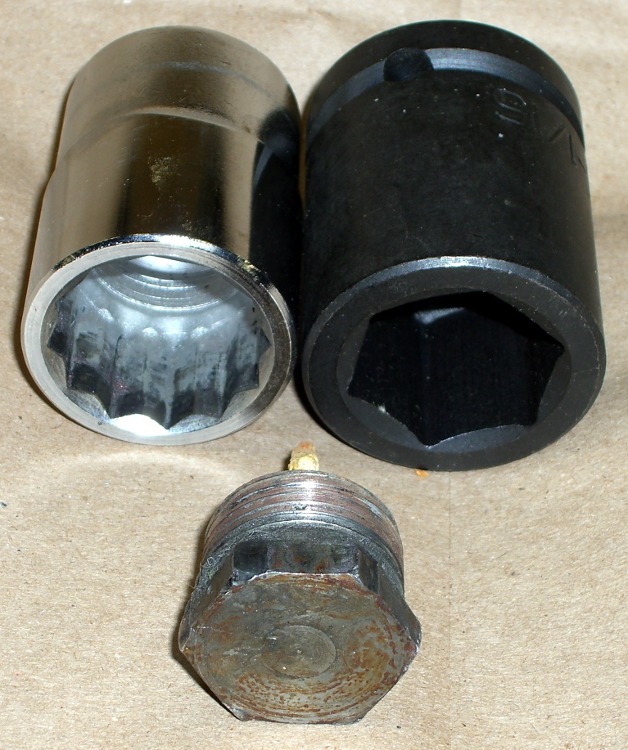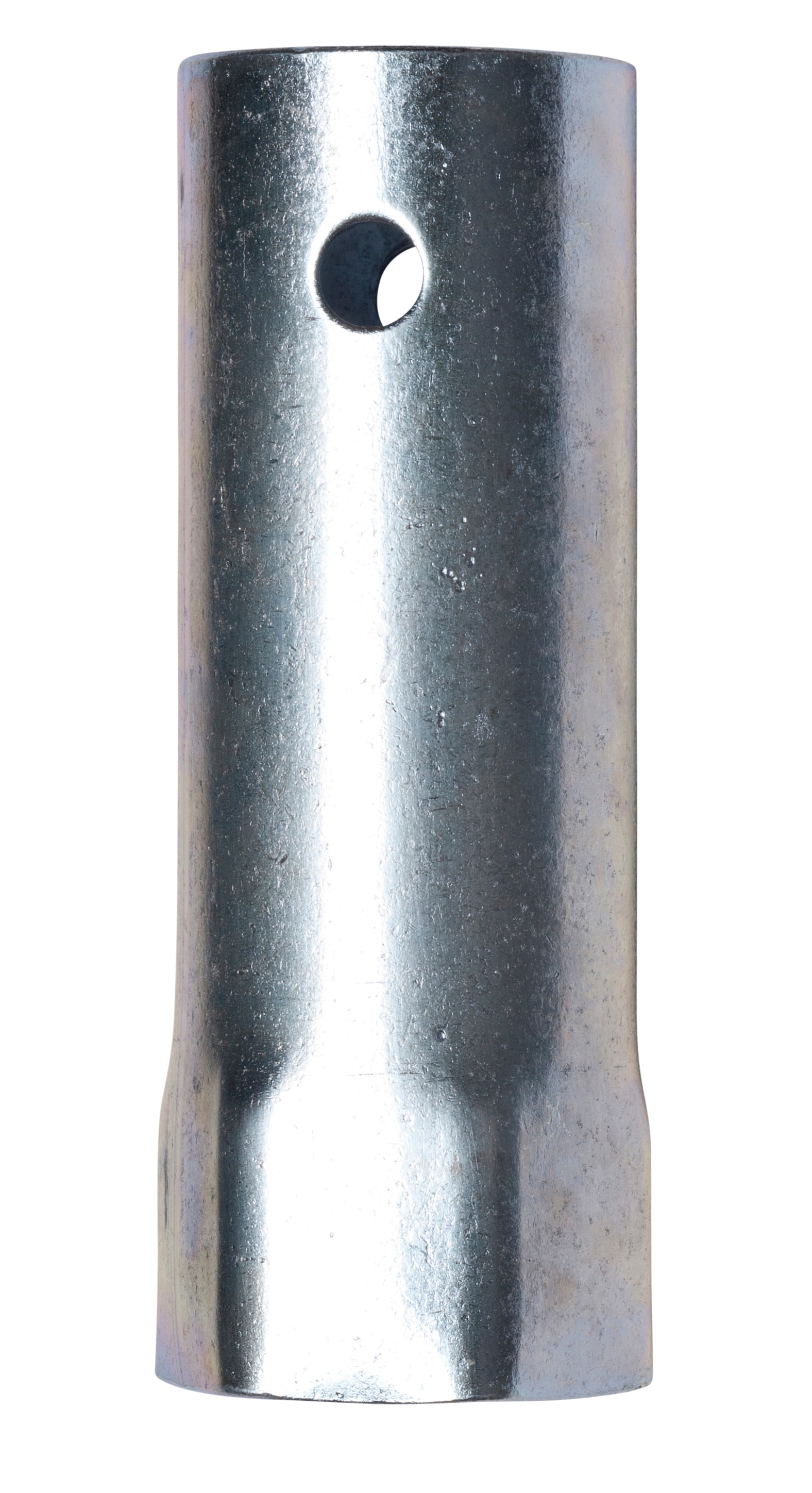There are a few factors to consider when determining what size socket is needed for a water heater element. The first factor is the voltage of the element. The second factor is the wattage of the element.
The third factor is the amperage rating of the circuit breaker.
Don't BUY tool to remove electric hot water heater element – BORROW it for FREE!
Most water heaters have an element size of 1/2″, 5/8″ or 3/4″. The most common size is 1/2″. The element size is determined by the pipe thread size that it screws into. You can measure the thread diameter with a caliper or a ruler.
Once you know the thread diameter, you can purchase the correct sized socket at your local hardware store.
Water Heater Element Socket Size in Mm
There are a few different types of water heater element sockets, but the most common is the 3/4-inch socket. This is the standard size for most residential water heaters. If you have a commercial or industrial water heater, it may have a different size socket.
The important thing to remember is that the element must fit snugly in the socket in order to work properly.
If your water heater element needs to be replaced, you can find replacement elements at most hardware stores or online retailers. Be sure to measure the diameter of the element before ordering so that you get the correct size.
Once you have the new element, simply screw it into place using the appropriate sized socket wrench.
Socket Size for Water Heater Anode
If your water heater is over 10 years old, it’s a good idea to check the anode. The anode is a metal rod that helps protect the tank from corrosion. If the anode is corroded, it needs to be replaced.
Anodes come in different sizes and lengths, so you need to know what size socket wrench to use when replacing it. The most common sizes are 1/2 inch and 3/4 inch.
If you have a natural gas or propane water heater, the anode will be located near the top of the tank.
For electric water heaters, the anode is usually located near the bottom of the tank.
To remove the old anode, turn off power to the water heater and drain some of the water out of the tank (about 2 gallons). Then use a wrench to unscrew the old anode and pull it out.
Inspectthe threads onthe rodand make sure they aren’t damaged before screwing in a new one. Hand-tighten only–don’t overtighten! Replace any washers or o-rings as needed before screwing inthe newanode.
Afterwards, turn power back onto the water heaterand let it fill up withwaterbefore usingit again.
How to Remove Water Heater Element Without Socket
Most homeowners don’t know how to remove a water heater element without a socket. This is because the elements are usually hidden away and difficult to access. However, if you need to replace your water heater element, it’s not as difficult as you might think.
With a few simple tools, you can easily remove the old element and install a new one.
To remove the old element, start by shutting off the power to the water heater at the breaker box. Next, drain the tank by attaching a garden hose to the drain valve and opening it up.
Let all of the water run out until the tank is empty.
Once the tank is empty, unscrew the access panel on top of the unit to expose the elements. using a wrench, loosen each of the nuts that hold the element in place.
Carefully pull out each element and disconnect any wires that are attached to them.
Now it’s time to install your new element. Start by screwing in each ofthe new elements hand-tight .
Then use your wrench to tighten each nut until it’s snug againsttheElement . Finally , reattach any wires that were disconnected and close up The access panel .
Test your newelementBy turning onThe power at The breaker box And letting The tank fill back up with water .
Once The tank is full , turn on A faucet connected ToThe system To check for leaks . If everything looks good , you’ve successfully replaced your water heater element without a socket !
What Size Socket for Camper Water Heater Element
If you have a camper, then you know that one of the most important things is to have a good water heater. The water heater in your camper allows you to have hot showers, do dishes, and wash clothes while you’re on the road. But what size socket do you need for your camper water heater element?
The size of the socket needed for your camper water heater element will depend on the model of your camper. Most campers use either a 6-volt or 12-volt system, so make sure to check what voltage your camper uses before purchasing an element. If you’re not sure which size socket to get, ask an employee at the store or consult the owner’s manual for your specific model of camper.
Once you know what size socket you need, it’s time to install it! Make sure to turn off the power to your water heater before starting. Then, remove the old element and screw in the new one.
Be careful not to overtighten it, as this can damage the threads. Finally, turn on the power and test out your new element by running hot water through it.
Water Heater Element Thread Size
If you’re in the market for a new water heater, or if you’re simply doing some research on the topic, you’ve probably come across the term “water heater element thread size.” But what does this term actually mean? And why is it important to know?
In short, the thread size of a water heater element is a measure of the diameter of the screw-type connection that attaches the element to the heating unit. The most common sizes are 1/2 inch and 3/4 inch, but there are other sizes available as well.
Why is thread size important?
Well, if you have an older water heater with a 1/2 inch thread size and you try to replace the element with a 3/4 inch thread size, it’s not going to fit. So knowing the right thread size for your specific model is crucial in order to get the correct replacement part.
Not sure what size you need?
Don’t worry – most manufacturers include this information in their product listings (or you can always check your owner’s manual). Once you know the right thread size, simply select an appropriately sized replacement element and you’ll be good to go!

Credit: softsolder.com
What Size Socket Do You Need for a Water Heater Anode?
If your water heater has an anode rod, it is important to know the size of socket you need to remove and replace it. The most common sizes are 1/2 inch and 3/4 inch, but there are other sizes as well. You can usually find the size on the manufacturer’s website or in the owner’s manual.
The anode rod is located inside the tank and is used to protect the tank from corrosion. Over time, the anode rod will corrode and need to be replaced. If you don’t replace it, the tank could rust and leak.
To remove the old anode rod, you will need a wrench that fits the size of the nut on the end of the rod. Once you have removed the old rod, you can screw in a new one. Be sure to check your manufacturer’s instructions for specific installation instructions.
Which Socket is Required for Water Heater?
There are two types of sockets required for a water heater- an inlet socket and an outlet socket. The inlet socket is located on the top of the water heater and is used to fill the tank with cold water. The outlet socket is located on the bottom of the tank and is used to drain hot water from the tank.
Are All Water Heater Elements the Same Size?
Are all water heater elements the same size? This is a common question with a not so simple answer. While most residential water heaters come in standard sizes, the elements that heat the water can vary greatly inStage and type of element.
Residential electric water heaters typically have one or two heating elements, each with its own thermostat. The upper element is controlled by the top thermostat and the lower element by the bottom thermostat. Gas-fired water heaters have only one burner located beneath the tank.
How Do I Remove a Hot Water Heater Element?
If your water heater is electric, it likely has two heating elements—one near the top of the tank and one near the bottom. Most homeowners don’t need to remove or replace their heating elements very often, but if yours isn’t working properly, you may need to replace it. Here’s how to do so:
1. Turn off the power to your water heater. This is usually done by flipping a switch on your breaker box. If you can’t find the switch, you may need to shut off power to your entire home.
2. Drain some water from the tank. You’ll need a garden hose for this step. Attach the hose to the drain valve at the bottom of the tank and open it up.
Let about a gallon or so of water drain out into a bucket or down an outdoor drain before moving on.
3. Remove the access panel from your water heater. This will give you access to the heating element(s).
The panel is usually held in place with screws; remove them and set aside the panel until you’re finished working.
4. Unscrew the retaining nut that holds the heating element in place using a wrench (it may be helpful to put a rag overthe end ofthe wrenchto avoid getting burned). Carefully pull outthe oldheating elementand setaside (you candisposeofit later).
5 Insertthe newheatingelementintothe openingand screwthe retainingnut backin place (again, usethe wrenchcoveredwitha rag).
6 Replaceand screwdown th eaccesspanel . 7Restorepowerto yourwaterheaterbyflippingthe switchon againatthebreakerbox .
Conclusion
If you’re wondering what size socket you need for your water heater element, the answer is: it depends. The size of the socket you’ll need is determined by the size of the element itself. Most elements are either 1/2″ or 3/4″, so you’ll need a socket that’s either 1/2″ or 3/4″.
If you’re not sure what size element you have, it’s best to measure it before heading to the store to buy a socket.

